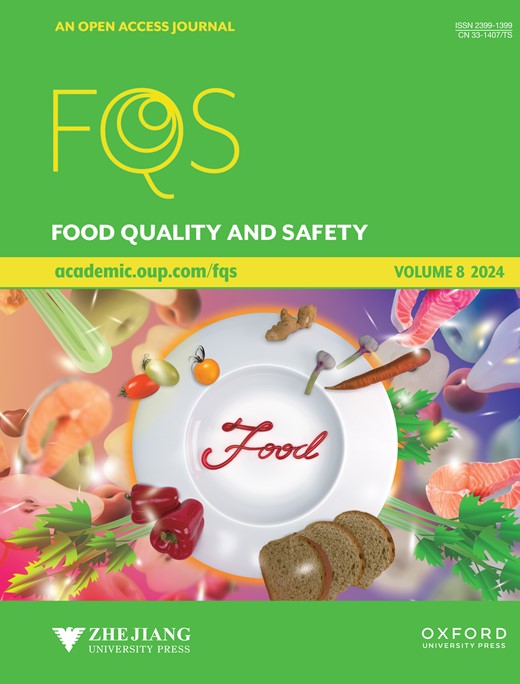Fabrication of telechelic DNA bridged food emulsion gel as edible ink for 3D printing
IF 4.4
3区 农林科学
Q2 FOOD SCIENCE & TECHNOLOGY
引用次数: 0
Abstract
Interdroplet interactions affect the properties and textures of emulsions. In this study, we creatively introduced telechelic DNA to link the oil droplets directly at molecular scale to further improve viscoelastic properties of emulsions. A stable emulsion with 70% oil fraction was prepared by 40 mg/mL of whey protein isolate and peach gum polysaccharide complex (WPI-PGP complex). The addition of telechelic DNA (0.125 to 0.375 μM) made emulsion state from cream-like to self-supporting gel. Rheological experiments confirmed that the telechelic DNA could improve the yield stress, storage modulus/loss modulus (G’/G”) and apparent viscosity of emulsion gel in a concentration-dependent manner (0 to 0.375 μM). Inverted fluorescence images manifestly showed the interdroplet network of emulsion gel linked by telechelic DNA. For 3D printing, the emulsion gel with a higher concentration (0.375 μM) of telechelic DNA displayed a better surface quality and dimensional resolution, indicating an improved printability. Therefore, this study successfully designed a novel telechelic DNA-bridged emulsion gel, which showed great potential as edible inks for 3D printing.制作用于 3D 打印的可食用油墨--DNA 桥接食品乳液凝胶
液滴间的相互作用影响乳剂的性质和结构。在本研究中,我们创造性地引入远螺旋DNA在分子尺度上直接连接油滴,进一步提高乳液的粘弹性。以40 mg/mL分离乳清蛋白和桃胶多糖配合物(WPI-PGP配合物)为原料,制备了油分70%的稳定乳液。远旋DNA (0.125 ~ 0.375 μM)的加入使乳液由乳状变为自支撑凝胶。流变学实验证实,远旋DNA对乳状凝胶的屈服应力、存储模量/损耗模量(G′/G”)和表观粘度(0 ~ 0.375 μM)有一定的浓度依赖性。倒置荧光图像清晰地显示了由远螺旋DNA连接的乳液凝胶滴间网络。在3D打印中,远旋DNA浓度更高(0.375 μM)的乳液凝胶具有更好的表面质量和尺寸分辨率,表明其可打印性有所提高。因此,本研究成功设计了一种新型的远旋dna桥接乳液凝胶,该凝胶作为3D打印的食用油墨具有很大的潜力。
本文章由计算机程序翻译,如有差异,请以英文原文为准。
求助全文
约1分钟内获得全文
求助全文
来源期刊

Food Quality and Safety
FOOD SCIENCE & TECHNOLOGY-
CiteScore
7.20
自引率
1.80%
发文量
31
审稿时长
5 weeks
期刊介绍:
Food quality and safety are the main targets of investigation in food production. Therefore, reliable paths to detect, identify, quantify, characterize and monitor quality and safety issues occurring in food are of great interest.
Food Quality and Safety is an open access, international, peer-reviewed journal providing a platform to highlight emerging and innovative science and technology in the agro-food field, publishing up-to-date research in the areas of food quality and safety, food nutrition and human health. It promotes food and health equity which will consequently promote public health and combat diseases.
The journal is an effective channel of communication between food scientists, nutritionists, public health professionals, food producers, food marketers, policy makers, governmental and non-governmental agencies, and others concerned with the food safety, nutrition and public health dimensions.
The journal accepts original research articles, review papers, technical reports, case studies, conference reports, and book reviews articles.
 求助内容:
求助内容: 应助结果提醒方式:
应助结果提醒方式:


